

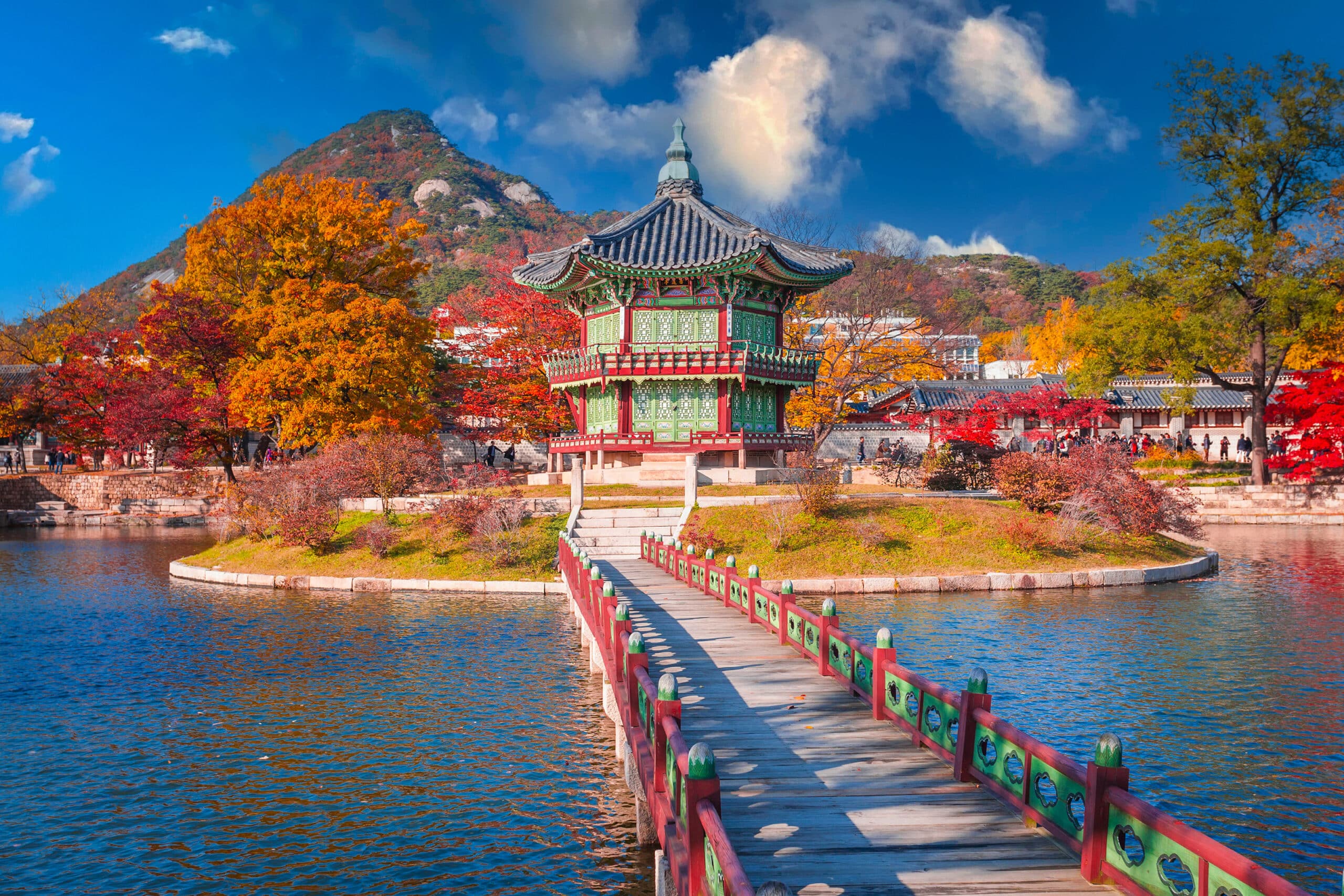
South Korea, a fascinating country where millennia-old traditions and ultra-connected modernity coexist in perfect harmony, invites you to a unique travel experience. From the majestic royal palaces of Seoul to breathtaking natural landscapes, to a dynamic pop culture (K-pop, K-drama) and spicy and savoury gastronomy, our stays in South Korea are a promise of wonder and discovery. Explore our offers and let yourself be captivated by the “Land of the Morning Calm”.
A unique blend of tradition and modernity
Explore centuries-old palaces, peaceful Buddhist temples, and traditional villages (hanok) alongside futuristic skyscrapers and cutting-edge technology.
A pop culture influential worldwide
Dive into the world of K-pop, K-dramas, Korean cinema, and avant-garde fashion.
Varied and magnificent natural landscapes
Green mountains ideal for hiking (national parks like Seoraksan), picturesque coasts, and volcanic islands (Jeju).
A rich and convivial gastronomy
Savour kimchi, Korean barbecue, bibimbap, and a multitude of spicy and tasty dishes, often shared.
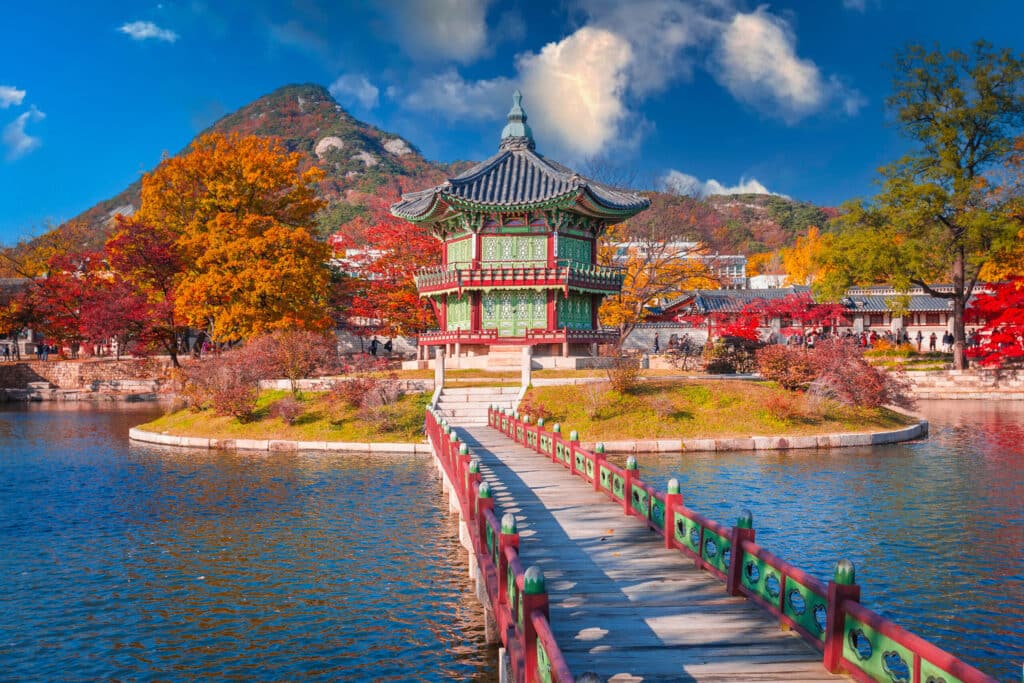
€3,350
price per person
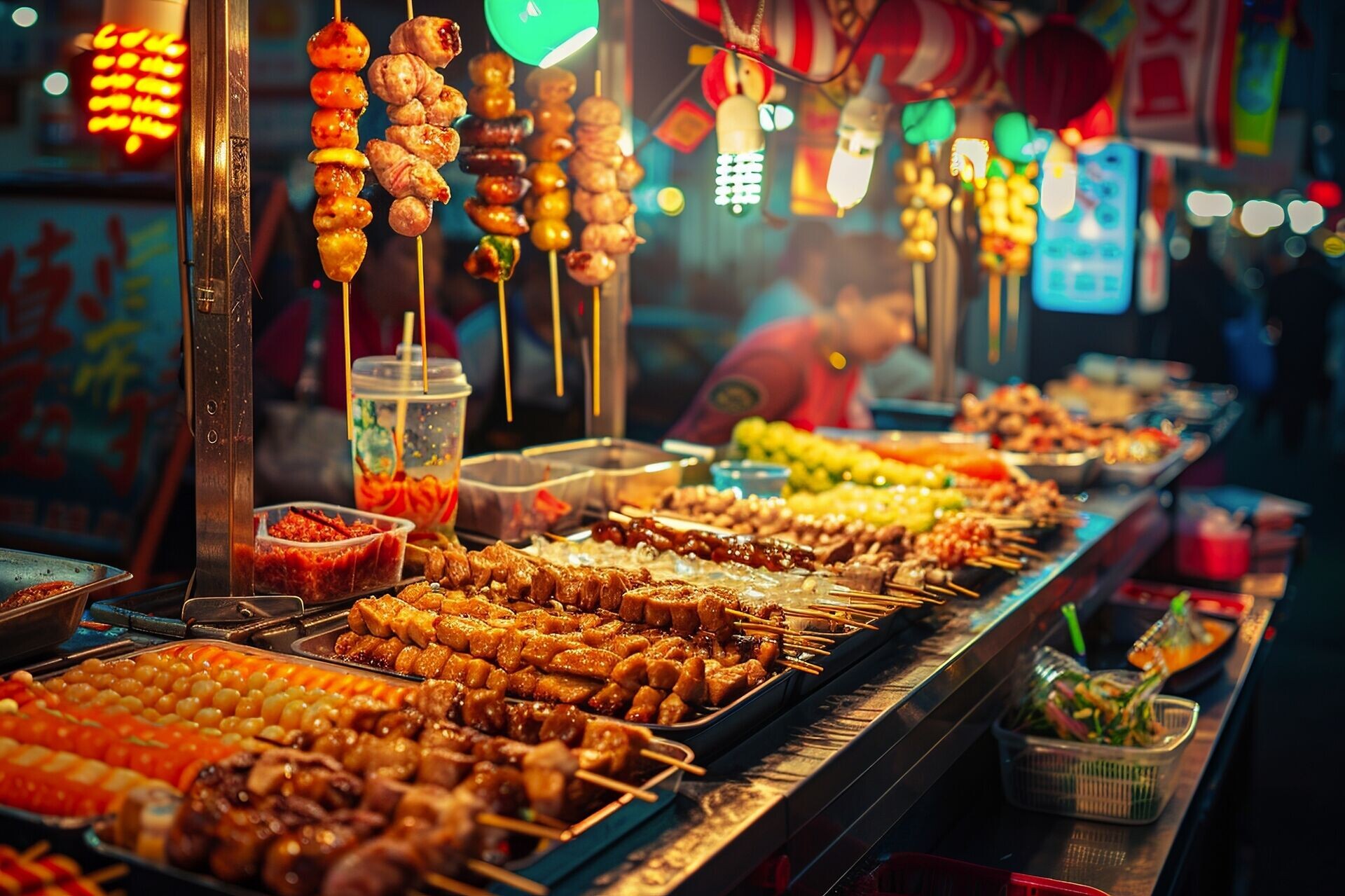
4430€
price per person
South Korea offers a multitude of sites to discover.
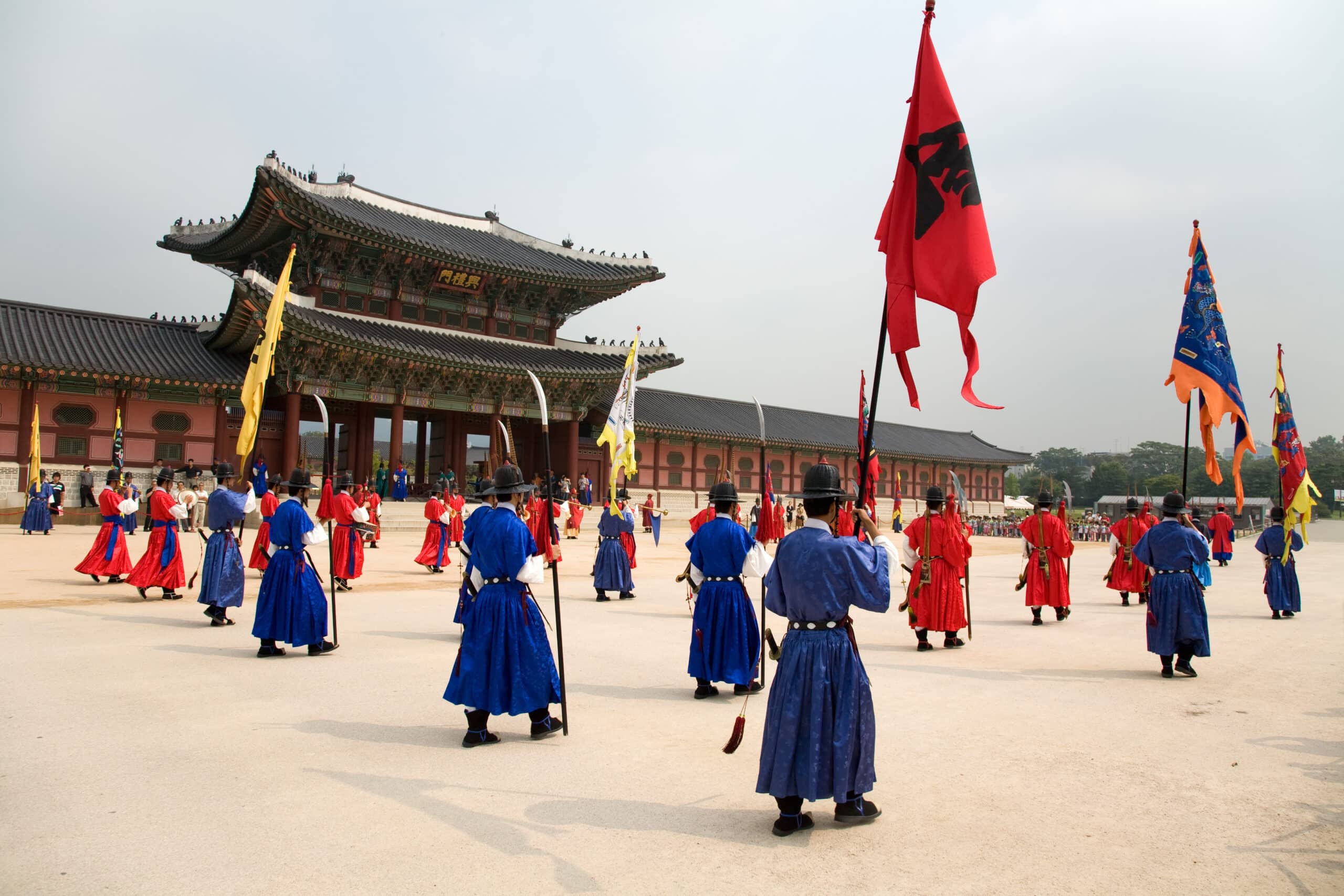
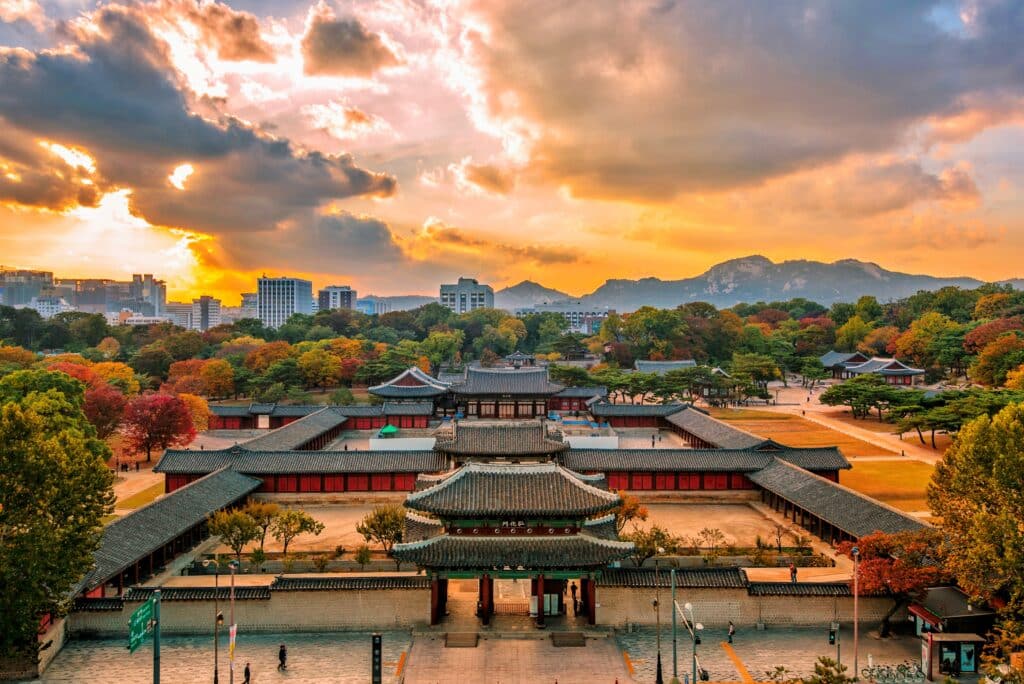
South Korea has a temperate continental climate with four distinct seasons:
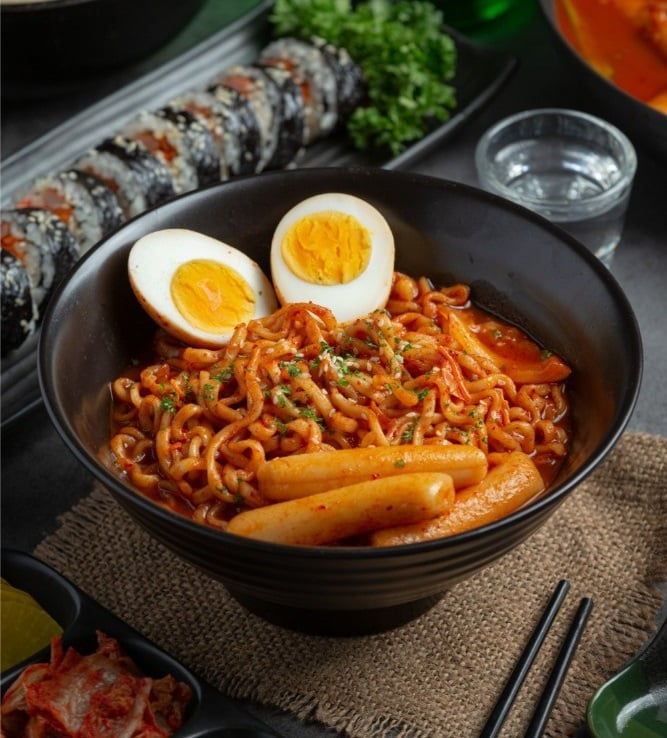
Korean cuisine is renowned for its bold flavours, spicy dishes, and health benefits. The kimchi (spicy fermented cabbage) accompanies almost every meal. The Korean barbecue (gogi-gui), where you grill the meat yourself at the table, is a convivial experience. The bibimbap (rice mixed with vegetables, meat, and an egg), bulgogi (grilled marinated beef), and tteokbokki (rice cakes in a spicy sauce) are popular dishes. Soups and stews (jjigae) are also very appreciated. Korean street food is varied and delicious. The soju (rice alcohol) and makgeolli (milky rice wine) are traditional drinks.
| Jan | Feb | March | April | Mai | June | July | Aug | Sept | Oct | Nov | Dec | |
|---|---|---|---|---|---|---|---|---|---|---|---|---|
| Our opinion | ||||||||||||
| T° max | 2°C | 5°C | 11°C | 18°C | 23°C | 27°C | 29°C | 30°C | 26°C | 20°C | 12°C | 5°C |
| Rainy days | 5 d | 5 d | 6 d | 7 d | 8 d | 9 d | 15 d | 15 d | 8 d | 6 d | 7 d | 6 d |
| Hiking |
In South Korea, when a baby is born, it is already considered to be one year old. This is the Korean age system. Additionally, everyone ages one year on New Year’s Day, regardless of their actual birth date. (Note: This system was officially abolished for legal and administrative documents in June 2023 to align with the international system, but it may still be used socially by some people).
The official currency is the South Korean Won (KRW). Credit cards are widely accepted, even for small amounts, especially in cities. However, it’s always useful to have some cash for traditional markets or public transport (although the rechargeable T-money card is very convenient). ATMs are plentiful, but make sure they accept international cards (look for Visa, Mastercard logos, etc., or “Global” ATMs).
The people of South Korea are called South Koreans (or simply Koreans, with the context usually clarifying it is the South).
The official language is Korean, written with the Hangeul alphabet, an easy-to-learn phonetic writing system. English is taught in schools, and you will find English speakers in tourist areas, hotels, and among young people. However, outside major cities, communication in English may be more difficult. Knowing a few Korean words will be very useful and appreciated.
In South Korea, electrical outlets are type C and F. The standard voltage is 220V and the frequency is 60Hz. French devices (which usually use C or E plugs) often work without an adapter with type F outlets. The 60Hz frequency (compared to 50Hz in France) generally does not pose a problem for most modern electronic devices.